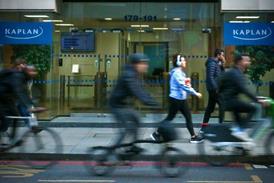How does a recent case influence whether courts should give permission for the use of the disclosed documents in subsequent third-party proceedings?
Civil Procedure Rule 31.22(1) provides that a party to whom a document has been disclosed may use the document only for the purpose of the proceedings in which it is disclosed. However, this general rule may be set aside where: (a) the document has been read to or by the court, or referred to, at a hearing which has been held in public; (b) the court gives permission; or (c) the party who disclosed the document and the person to whom the document belongs agree.
The recent case of Alphasteel Limited (in liquidation) v Shahran Shirkhani and another [2013] EWCA Civ 1272 raised the question whether the court should give permission pursuant to CPR 31.22 for the use of the disclosed documents in subsequent third-party proceedings, thereby implicating the appellants even after the parties had compromised their dispute and entered into a legally binding settlement agreement.
The parties in Alphasteel Limited had compromised their dispute by entering into a settlement agreement. The agreement also contained a term as to the confidentiality of not just the agreement itself but the substance of all negotiations in connection with it. Subsequently, through its liquidators, Alphasteel sought permission from the court to use some of the documents disclosed by the appellants in proceedings against a third party in Switzerland. Alphasteel made an application under CPR 31.22(1)(b) to be released from its obligations under the settlement agreement because it believed that the disclosed documents in question were relevant and material to a claim they intend to make against the third party.
The judge at first instance held that the terms of settlement did not preclude Alphasteel’s application. The judge did not consider that Alphasteel was making a ‘claim’ to be entitled to use the documents. In the judge’s opinion, Alphasteel had requested permission to use the disclosed documents because it recognised that it was not entitled to use them and, even if it was making a claim, the judge did not consider that it was a claim ‘against’ the appellants (or anyone else).
The Court of Appeal (Tomlinson, Gloster and Underhill LJJ) overturned the first instance decision. The court recognised that the obligation imposed by CPR 31.22 was owed to the court rather than the party who had given disclosure (as established by previous Court of Appeal authority – see, for example, Marlwood Commercial Inc v Kozeny & Ors [2005] 1 WLR 104). Nonetheless, the CPR 31.22 regime recognised that the disclosing party still had an interest in the confidentiality of his documents to protect, even after a limited inroad into that confidentiality had been made by compulsory disclosure. The court found that the settlement agreement precluded the application to use the disclosed document in a separate action.
In circumstances where the settlement agreement was obviously aimed at wiping the slate clean between the parties, it was appropriate to regard the claimant’s application as seeking a right at the expense of the defendants. As Tomlinson LJ held: ‘Where the parties to a settlement agreement intended to settle out of court subject to binding agreement, it was not open to one of the parties to then subsequently apply to the court for permission to use the disclosed documents of the other party for a purpose other than in which they were disclosed.’
The court further held that Alphasteel’s application was in effect a claim against the appellants which, if granted, would have allowed the use of the disclosed documents for a collateral purpose, thereby depriving the appellants of their right of confidentiality and privacy under such an agreement. Tomlinson LJ held: ‘For similar reasons I also reject Mr Kitchener’s second argument, that, in requesting permission, Alphasteel are acting in breach of their covenant not to “prosecute or… otherwise pursue… any… rights… against Shirkhani and/or Summit”. They do not assert any right to use the documents or any right to be permitted to use them, still less any right “against” either Mr Shirkhani or Summit. Their concern is to avoid being in breach of CPR 32.11. It is true that Mr Shirkhani and Summit have an interest in the documents and an interest in whether the court permits Alphasteel to use the documents, but I am not able therefore to translate Alphasteel’s request into the assertion (or prosecution or pursuit) of a right (or rights) against Mr Shirkhani or Summit.’
Although the above decision of the appeal court turned on the interpretation of the particular settlement agreement in question, the terms of the agreement were not out of the ordinary. The decision therefore suggests that in many cases where the parties agree to be bound by a wide-ranging term and covenant not to sue, this may be construed to preclude an application to use the disclosed documents for any collateral purpose.
Further, it is clear that if a matter settles and a party subsequently wishes to use the disclosed document for a purpose other than the proceedings in which the documents were disclosed, explicit and unambiguous language must be inserted into the terms of the settlement agreement reserving such a right to make an application to the court.
Masood Ahmed, University of Leicester
This article was co-authored by law student Zahir Khan

















![David Lester (senior partner at Blythe Liggins), Darryl Barnes, Jagdeep Sandher (head of dispute resolution at Blythe Liggins)[4]](https://d1d8vslyhr7rdg.cloudfront.net/Pictures/274x183/4/2/8/116428_davidlesterseniorpartneratblytheligginsdarrylbarnesjagdeepsandherheadofdisputeresolutionatblytheliggins4_981603_crop.jpg)









No comments yet